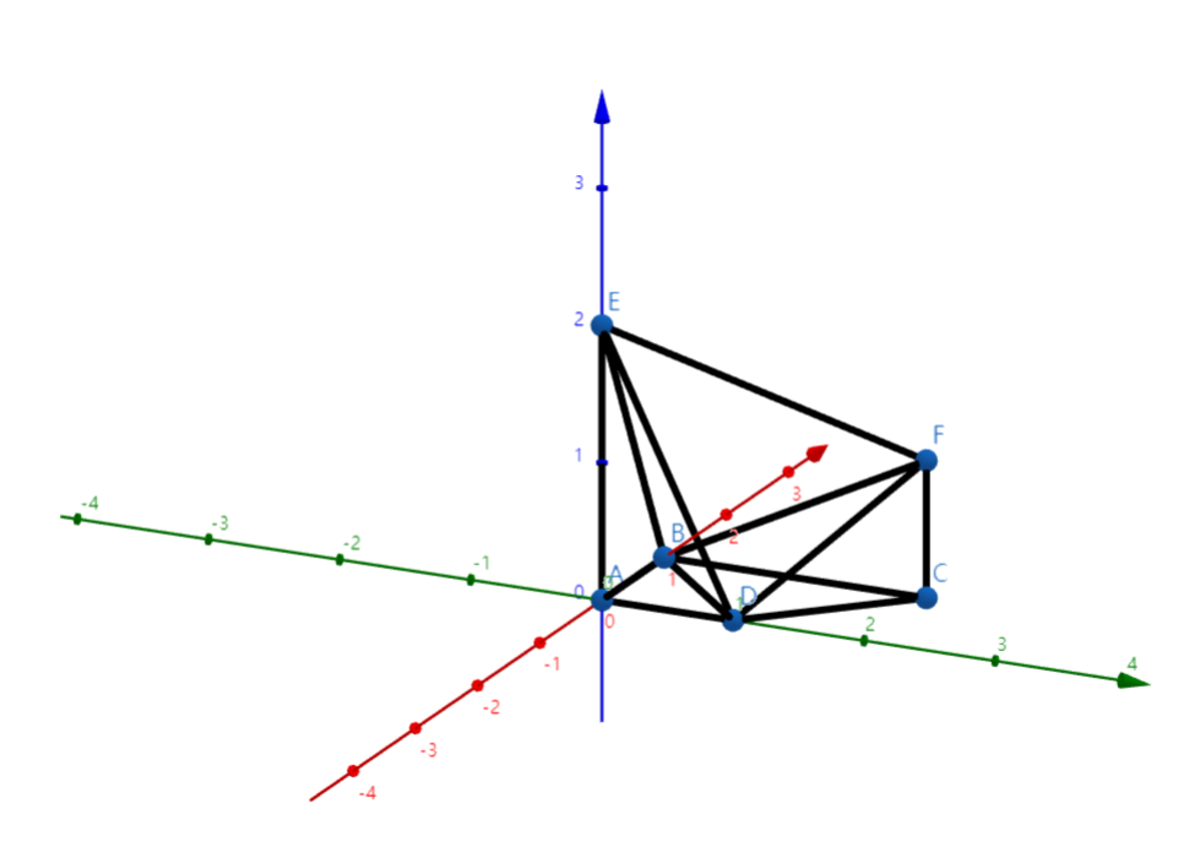Find the dihedral angle

As shown above, in a 3D-rectangular coordinate system system:
.
Then find the dihedral angle . Submit the angle in degrees and round to the hundredth.
The answer is 74.21.
This section requires Javascript.
You are seeing this because something didn't load right. We suggest you, (a) try
refreshing the page, (b) enabling javascript if it is disabled on your browser and,
finally, (c)
loading the
non-javascript version of this page
. We're sorry about the hassle.
One of the simplest problems that you post :P
B D = j ^ − i ^ , B E = 2 k ^ − i ^ , B F = 2 j ^ + k ^ .
The required dihedral angle is
cos − 1 ( ∣ B D × B E ∣ ∣ B D × B F ∣ ( B D × B E ) . ( B D × B F ) ) = cos − 1 ( 3 × 6 2 − 2 + 2 ) = cos − 1 ( 3 6 2 ) ≈ 7 4 . 2 0 6 8 3 ° .